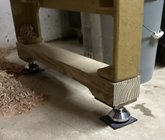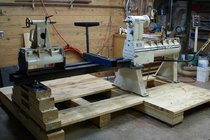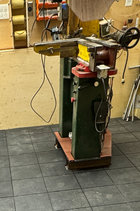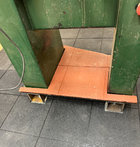I'd like to raise my lathe about 3 1/2 - 4" up. This would put my spindle right at elbow height ( I'm 6' 5"). I have tested this by cutting up a scrap piece of 4x12 header and placing it under the lathe legs. While this gets the height where I want it the lathe is less stable. My floors aren't very flat and I think having such a large "foot" now, foot meaning the surface area of the blocks I used, is the cause of the loss in stability. I think the blocks contact the high spots on the floor and can rock enough to allow some oscillation to occur.
Pouring a concrete block at each end seems like a possible answer but I am reluctant to do so as I will likely move this lathe at some point in the near future. I have seen leg extensions on other lathes but have not seen them for this lathe-maybe there's something I have yet to find...
Any ideas on how to get this lathe up higher? Or if you've done it in and can share what you did? My lathe is a jet 1642.
Thanks!
Pouring a concrete block at each end seems like a possible answer but I am reluctant to do so as I will likely move this lathe at some point in the near future. I have seen leg extensions on other lathes but have not seen them for this lathe-maybe there's something I have yet to find...
Any ideas on how to get this lathe up higher? Or if you've done it in and can share what you did? My lathe is a jet 1642.
Thanks!




